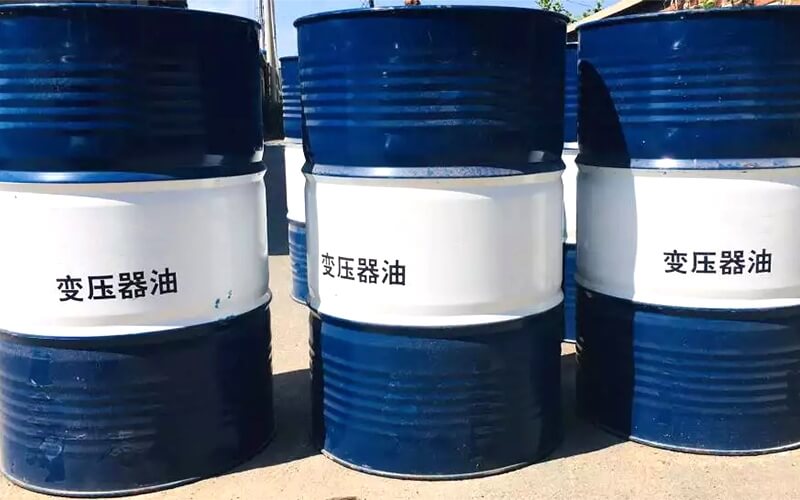How to understand the generation mechanism of gas in transformer oil?
Oil and paper are the main insulating materials for oil-filled electrical equipment. The mechanism of gas generation in oil is related to the performance of the material and various factors.
1. Transformer oil deterioration and gas production
Transformer oil is a mineral oil obtained by distillation and refining of natural petroleum. It is a mixture of various hydrocarbons, of which carbon and hydrogen account for 95% to 99% of its total weight, and the rest are sulfur, nitrogen, oxygen and very small amounts of metal elements. Petroleum-based hydrocarbons include cycloalkanes (CnH2n), alkanes (CnH2n+2), aromatic hydrocarbons (CnH2n-m) and some other components.
Cycloalkanes have good chemical stability and dielectric stability, and the viscosity changes little with temperature. Aromatic hydrocarbons also have good chemical stability and dielectric stability. They do not precipitate gas under the action of electric field, and can absorb gas. If the aromatic hydrocarbon content in transformer oil is high, the oil has strong gas absorption, otherwise the gas absorption is poor. However, aromatic hydrocarbons generate more carbon particles under the action of electric arc, which will reduce the electrical properties of oil; aromatic hydrocarbons are flammable, and as their content increases, the specific gravity and viscosity of the oil increase, and the freezing point rises. Paraffin hydrocarbons in cycloalkanes have good chemical stability and are easy to solidify oil. Under the action of electric field, they are easy to ionize and precipitate gas, and form dendritic wax, which affects the thermal conductivity of oil.
During operation, transformer oil undergoes oxidation, cracking and carbonization due to the catalytic effects of temperature, electric field, oxygen, moisture and materials such as copper and iron, generating certain oxidation products and their condensation products (oil sludge), hydrogen and low molecular hydrocarbon gases and solid wax.
In short, under the action of heat, electricity and oxygen, the deterioration process of transformer oil proceeds in a free radical chain reaction, and the reaction rate increases with the increase of temperature. The presence and content of oxygen and moisture have a great influence on the reaction. Metals such as copper and iron also act as catalysts to accelerate the reaction. The acid, H2O and oil sludge generated after aging endanger the insulation properties of oil. Refined transformer oil does not contain low molecular hydrocarbon gas, but transformer oil will decompose to produce carbon dioxide, low molecular hydrocarbon gas and hydrogen when subjected to high temperature during operation.
In summary, transformer oil is a mixture of many hydrocarbon molecules of different molecular weights, containing CH3*, CH2* and CH* chemical groups in the molecules, and bonded together by C-C bonds. Due to electrical or thermal faults, some C-H bonds and C-C bonds may be broken, accompanied by the generation of a small amount of active hydrogen atoms and unstable hydrocarbon free radicals. These hydrogen atoms or free radicals quickly recombine through complex chemical reactions to form hydrogen and low molecular hydrocarbon gases, such as methane, ethane, ethylene, acetylene, etc., and may also generate solid particles of carbon and hydrocarbon polymers (X wax). In the early stage of the fault, the gas formed dissolves in the oil; when the fault energy is large, it may also gather into free gas. The temperature of carbonization of oil to generate carbon particles is 500-800℃, and solid particles of carbon and hydrocarbon polymers can be deposited inside the equipment. Low-energy discharge faults, such as partial discharge, promote the formation of the weakest bond C─H bond (338kJ/mol) through ion reaction to re-combine hydrocarbon gas, which requires higher and higher temperatures and more and more energy.
Although ethylene is also produced in small amounts at lower temperatures, it is mainly produced at temperatures higher than methane and ethane, that is, at about 500℃. Acetylene is generally produced at temperatures of 800-1200℃, and when the temperature is lowered, the reaction is quickly inhibited and accumulates as a stable product of the re-compound. Therefore, although a small amount of acetylene is also produced at lower temperatures (below 800℃), a large amount of acetylene is produced in the arc path of the arc. In addition, when oil undergoes oxidation reaction, a small amount of CO and CO2 are generated, and CO and CO2 can accumulate for a long time and become a significant amount of characteristic gases.
2. Decomposition and gas of solid insulating materials
Oil-paper insulation includes insulating paper, insulating paperboard, etc., and their main components are cellulose. The gas components of cellulose thermal decomposition are mainly CO and CO2. The effective temperature of polymer cracking is higher than 105℃, and the temperature of complete cracking and carbonization is higher than 300℃. When water is generated, a large amount of CO and CO2 and a small amount of hydrocarbon gas and furan compounds are generated, and the oil is oxidized. The generation of CO and CO2 not only accelerates with the increase of temperature, but also increases with the increase of oxygen content in oil and humidity of paper.





